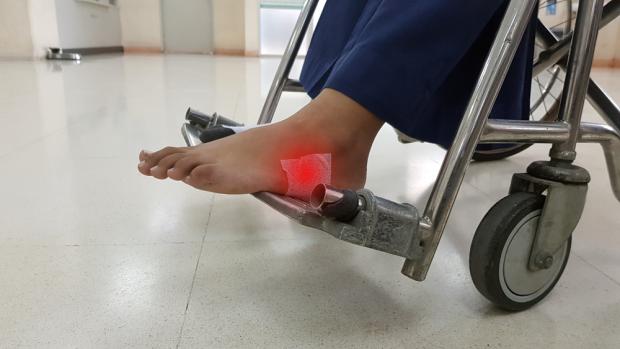Promising new approach for diabetic wound treatment under investigation at NYU

An NYU research team aims to boost healing of chronic wounds in diabetic patients by enhancing the body's natural repair mechanisms.
Led by Jin Kim Montclare — professor in the Department of Chemical and Biomolecular Engineering at NYU Tandon School of Engineering — and Piul Rabanni – Assistant Professor in the Hansjorg Wyss Department of Plastic Surgery at NYU Grossman School of Medicine – the researchers are developing a novel gene delivery system using engineered proteins and lipids to improve wound treatment.
The project — titled Modular Toolbox of Protein and Lipid Hybrid Biomaterials for siRNA Delivery — just won a National Institutes of Health grant that will deliver more than $2 million in funding.
"Our goal with this research is to create a flexible toolkit of specially engineered proteins and lipids," said Montclare. "These components can be combined to form a new type of tiny delivery vehicle we call a lipoproteoplex, or LPP. This vehicle is designed to transport small interfering RNA (siRNA) into cells, where it can interfere with specific genes. By developing this system, we aim to improve our ability to use genetic therapies to treat diseases."
Diabetic wounds are a major health concern, affecting millions worldwide and often leading to serious complications including amputation. Current treatments are often ineffective at addressing the underlying causes of impaired healing.
The researchers' target is a gene called Keap1, which normally suppresses the body's antioxidant responses. By reducing Keap1 activity, the researchers hope to boost the skin's ability to combat oxidative stress, a major factor in poor wound healing among diabetics.
The proposed LPP would consist of a protein core that binds to the siRNA, surrounded by a protective lipid shell. This dual structure could allow the nanoparticle to penetrate skin layers and deliver its cargo to cells more effectively than either component alone.
The research plan includes computational design, extensive laboratory testing, and trials in diabetic mouse models. If successful, the team hopes to demonstrate accelerated wound healing and reduced oxidative stress in treated animals, an initial step towards developing a technology suitable for human use.
The early-stage research project is proposed to span about four years. Its three objectives are to grow a collection of useful body proteins, test different fat coatings to protect them, and learn how cells absorb these coated proteins.
The project advances Montclare’s work on engineered proteins for medical applications. In papers published earlier this year, she and colleagues revealed that they developed multivalent assembled proteins (MAPs) to precisely target hypoxic cancer tumors and that they engineered improvements to Q8, a protein-based hydrogel that shows promise in enhancing chemotherapy delivery for triple-negative breast cancer.




